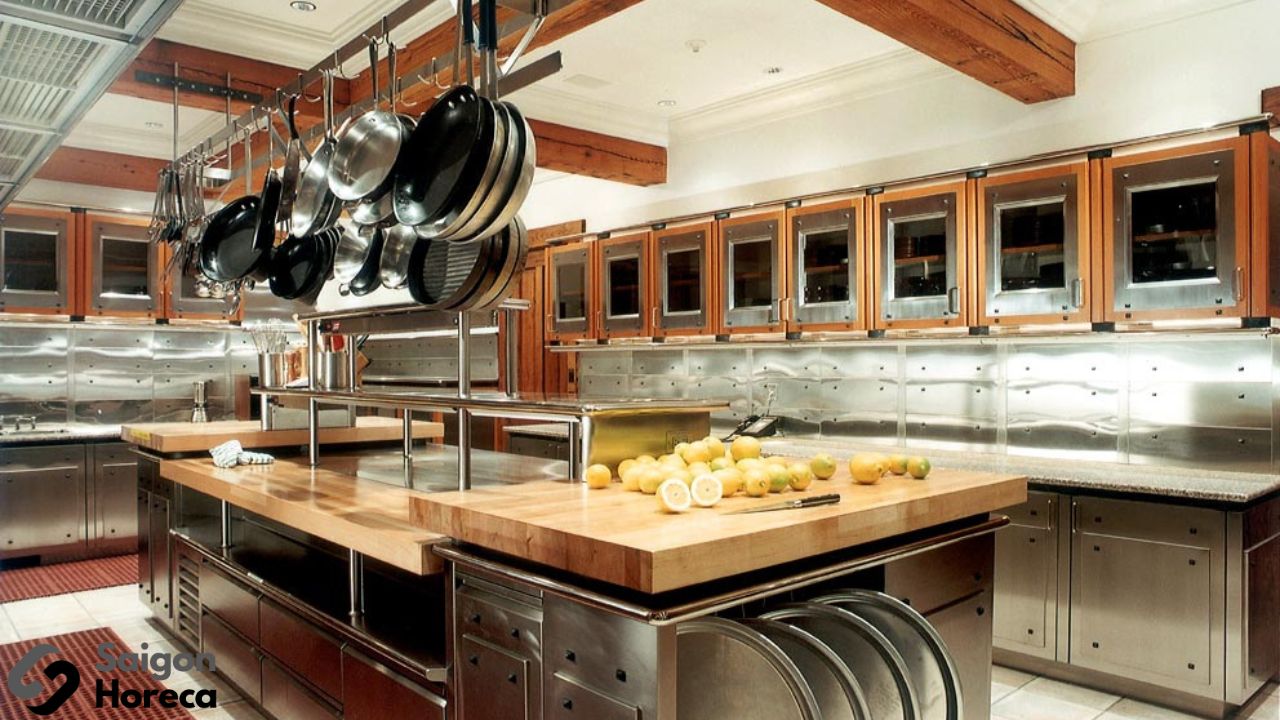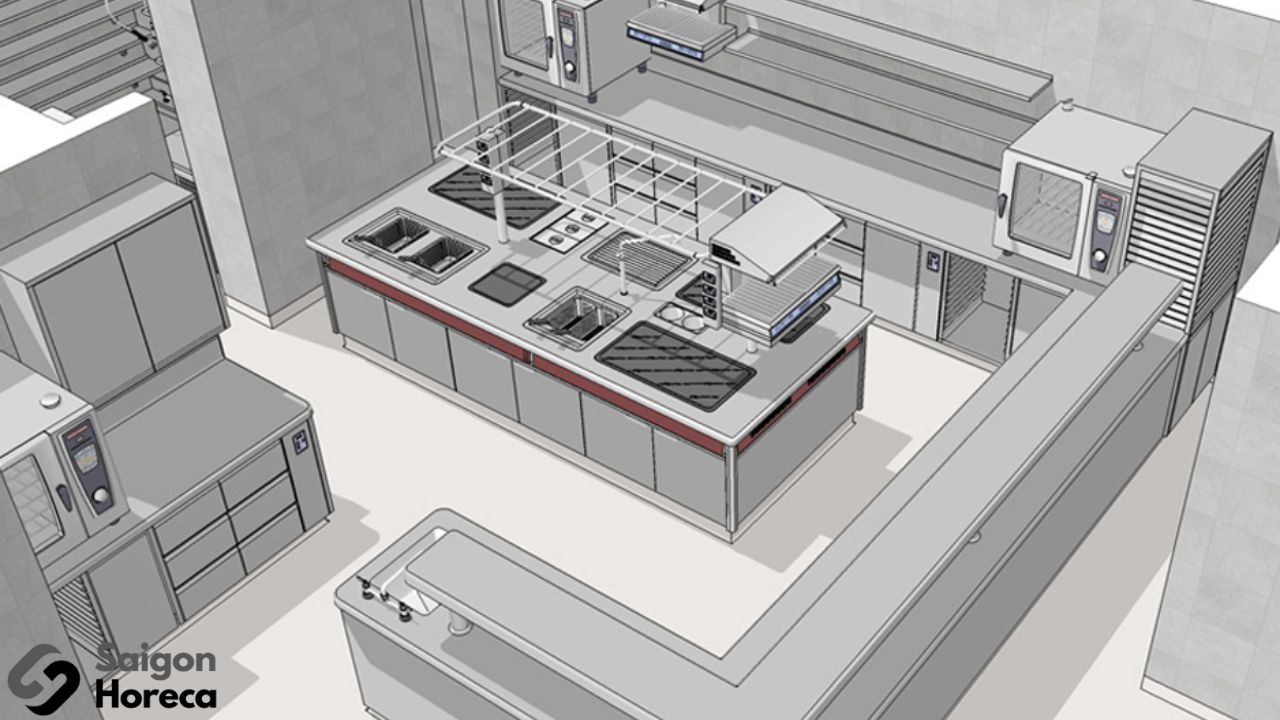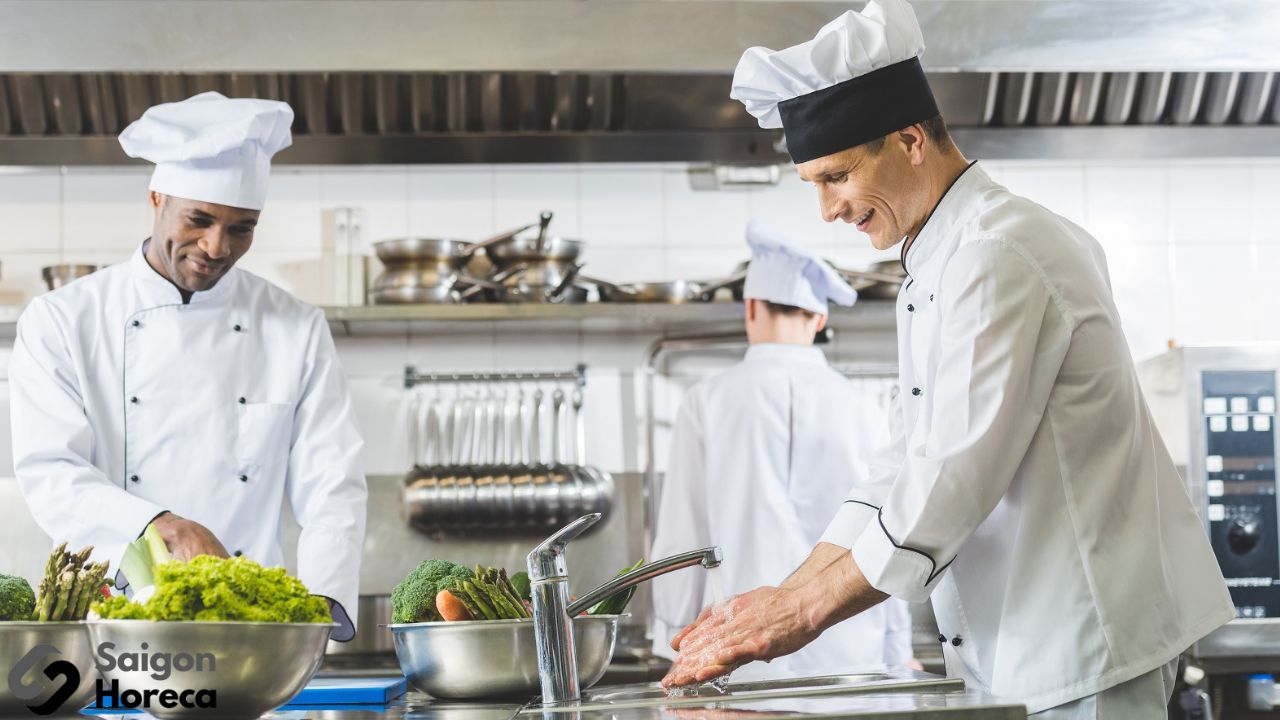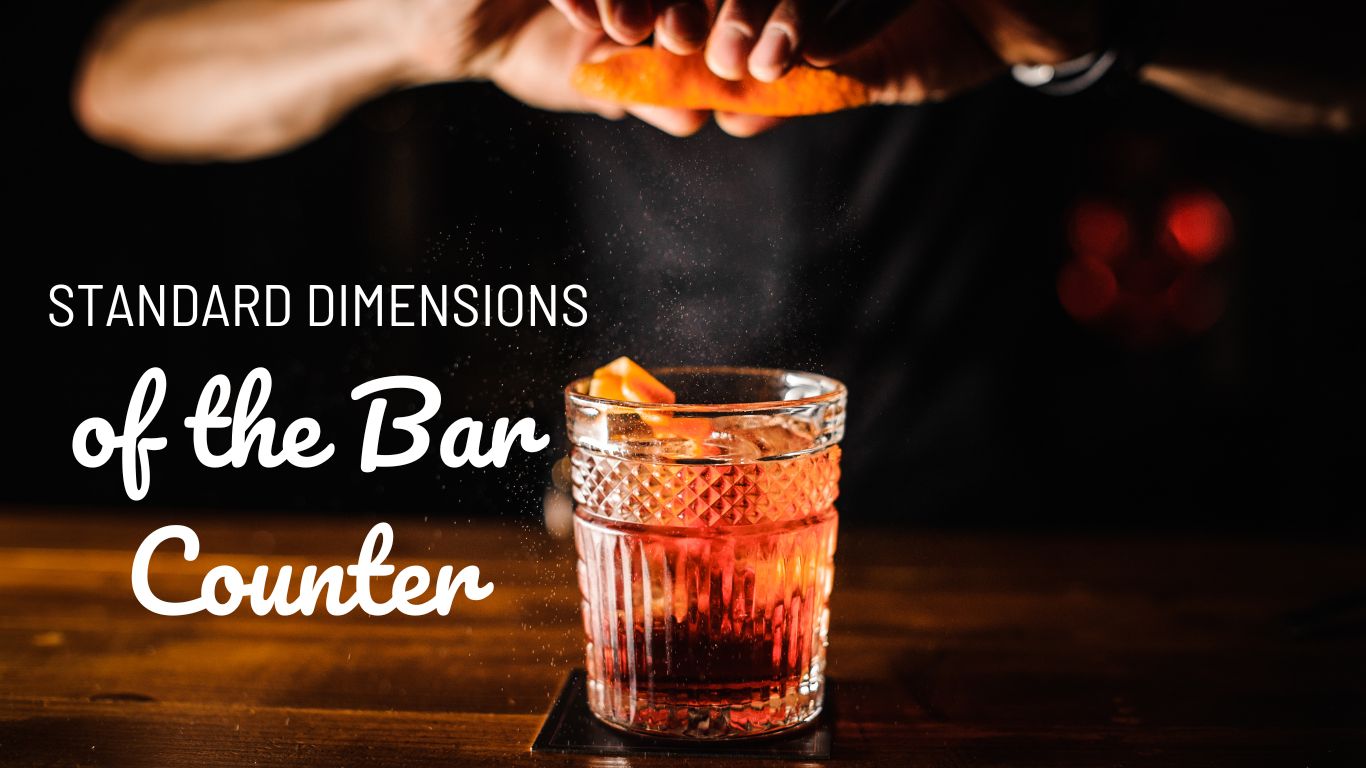In the food and beverage industry, the use of industrial ice makers is a crucial aspect to ensure a clean […]
Read More

- Industrial Kitchen Equipment, Kitchen Equipment by Business Model
A Guide to Mass Catering Kitchens – What You Need to Know
- November 9, 2023
In this article
Understanding What Mass Catering Kitchens Are
A mass catering kitchen is a facility or model that prepares and provides food for a large number of people, typically in a communal setting such as schools, government institutions, hotels, hospitals, prisons, or other special organizations and events. The primary goal of mass catering kitchens is to efficiently and safely prepare and provide food for a large audience.
These kitchens are designed and equipped to handle large volumes of food and may have stringent control systems to ensure food safety and compliance with food hygiene regulations. Chefs and kitchen staff in mass catering kitchens must adhere to strict rules regarding food safety and hygiene to ensure that the food they prepare is cooked properly, flavorful, and safe to consume.
Mass catering kitchens can serve daily meals or undertake special projects like weddings, conferences, or large-scale events. These facilities often offer a variety of food options to meet various culinary and nutritional needs.


New Trends in Mass Catering Kitchens
Currently, in the food service industry within organizations and businesses, we see two primary models for mass catering kitchens. The contract-based industrial meal service model is predominant, accounting for around 80%. In this model, organizations or businesses collaborate with professional food service companies that are licensed to provide meals to their staff based on signed contracts. This model streamlines operations and ensures quality and menu diversity.
The self-operated mass catering kitchens model is less common, accounting for about 20%. In this scenario, organizations or businesses set up and manage their own mass catering kitchens to serve their employees. This may involve owning and overseeing a team of chefs and cooking staff or providing a self-service cafeteria-style meal setup. This model allows organizations to have full control over the types of food, the cooking process, and the quality of the meals they provide to their staff.
Each model has its own advantages and limitations, and the choice between them depends on the specific needs, budget, and decisions of each organization or business.


Contract-Based Industrial Meal Service:
- In this approach, organizations or businesses contract with professional food service companies to provide meals to their staff. The employees do not participate in cooking.
- The food service company ensures cooking, preparation, and distribution according to the signed contract.
- This model typically saves time and resources for organizations or businesses, while ensuring that employees have delicious and nutritionally satisfying meals.


Self-Operated Mass Catering Kitchens:
- In this case, organizations or businesses set up and manage mass catering kitchens to prepare and serve food to their employees.
- This may involve having a team of chefs and cooking staff, or it may involve a self-service meal setup where employees serve themselves.
- This model gives organizations complete control over the type of food, the cooking process, and the quality of the meals they provide to their staff.
Each model has its own advantages and limitations, and the choice between them depends on the specific needs, budget, and decisions of each organization or business.






Food Safety Standards in Mass Catering Kitchens
Recently, there has been a significant increase in food poisoning cases, with 70% of cases originating from food transported over long distances. The main causes of this issue are often related to extended transportation times combined with unfavorable conditions during this process.
With the aim of protecting public health, the Ministry of Health has introduced regulations that require the issuance of food safety licenses for mass catering kitchens, such as those providing food to schools, hospitals, businesses, and enterprises. In addition, inspection teams strictly monitor the operations of these mass catering kitchens.
According to Circular No. 30/2012/TT-BYT by the Ministry of Health, which sets out regulations on food safety standards applicable to food service businesses, specifically street food vendors and mass catering kitchens. Food safety requirements are as follows:
Location and Facility Standards
Areas used for food preparation and consumption must ensure a dry environment free from water pooling and free from exposure to factors such as insects, animals, or harmful microorganisms. In particular, these areas should not be affected by areas contaminated with dust, chemicals, or other harmful substances.
>>> To ensure hygiene and food safety in an industrial kitchen environment, reading the article below will delve into factors such as food storage, cooking processes, and cleaning procedures to help you understand and implement necessary measures to prevent the spread of bacteria and protect the health of customers: 10 principles of food safety and hygiene for industrial kitchen systems.


Design and Layout Standards in the Food Catering Industry
Organizations or entities must ensure the existence of separate and distinct areas, including:
- Food ingredient preparation area: This is where raw materials are prepared and separated for food processing.
- Cooking and preparation area: This is where cooking and processing of ingredients into complete dishes take place.
- Food storage area: This is where food is stored after preparation to ensure food safety and quality.
- Packaged storage area: This is where packaged food is stored, whether it is ready for service or part of the inventory.
- Dining area: This is where customers or staff can enjoy the prepared meals.
- Hygiene area: This area must be designed to ensure hygiene for both staff and customers, including handwashing facilities and personal hygiene amenities.
Creating separate and organized areas is crucial to ensure all aspects of food preparation and service are conducted safely and efficiently.


Requirements for Food Ingredients and Special Equipment
Food ingredients, additives, processing aids, or preservatives must adhere to the following requirements:
- Clear origin and source: All food ingredients must have a clear and identifiable source and must be provided according to regulations and the necessary licenses. This ensures the safety and quality of ingredients.
- Usage permits: Food ingredients should have usage permits as required. This ensures that materials are used correctly and comply with food safety regulations.
Equipment and utensils that come into direct contact with food should be safe and not environmentally polluting. This ensures that food is not contaminated or harmful to health when in contact with these devices.
Ensuring the origin and safety of food ingredients and equipment is crucial to guarantee that food is processed and served in a safe and high-quality manner.
Personnel Requirements for Direct Involvement in Food Production
Owners of mass catering kitchens and employees directly involved in food production must undergo food safety and hygiene training. This training includes educating staff about rules and standards for food safety and hygiene, including proper storage, handling, and cooking of food. Upon completing the training, employees should be issued a training certification, which is a document that confirms they have received training in food safety and hygiene.
These measures ensure that staff have the knowledge and skills required to maintain food safety during food production and service. It also plays a crucial role in ensuring compliance with food safety regulations and reducing the risk of legal violations in this area.


Food Preservation Standards During Production
When handling and storing food in a mass catering kitchen environment, having separate storage areas is an essential factor to ensure that food quality and safety are consistently maintained. Food ingredients, packaging, and food items should be stored in separate areas designed to be spacious enough for efficient organization.
Separating food items into specialized areas prevents cross-contamination and loss while making it easy to identify and trace specific products. These dedicated storage areas also help control temperature and humidity, which are critical factors in maintaining food freshness and safety. This also helps prevent the growth of harmful microorganisms and ensures that food is not affected by external factors such as dust, insects, or harmful substances.
Additionally, using dedicated storage areas helps in controlling the quantity of food during the supply and inventory processes, ensuring that food is never expired or used beyond regulated timeframes. All of these measures together play a crucial role in ensuring the safety and quality of food in mass catering kitchens.
Monday - Friday
from 8h00 to 18h00
Số 40 Đường số 6, KDC Melosa Khang Điền, Phú Hữu, HCM.
Contact anytime
In designing the bar space for homes, restaurants, or cafes, choosing the appropriate size is crucial not only for convenience […]
Read More




